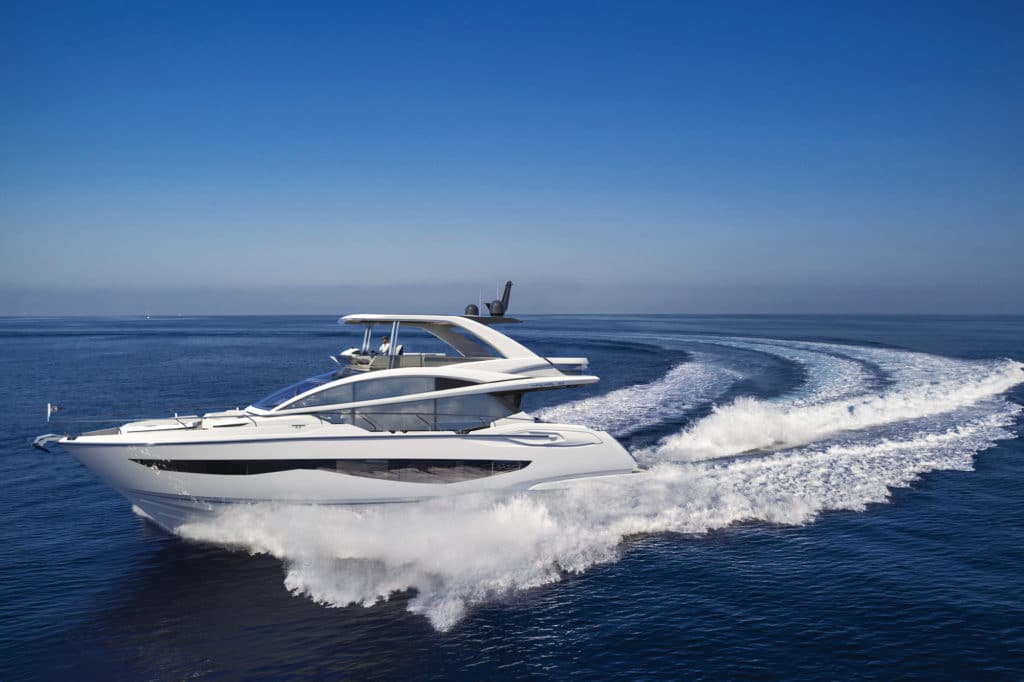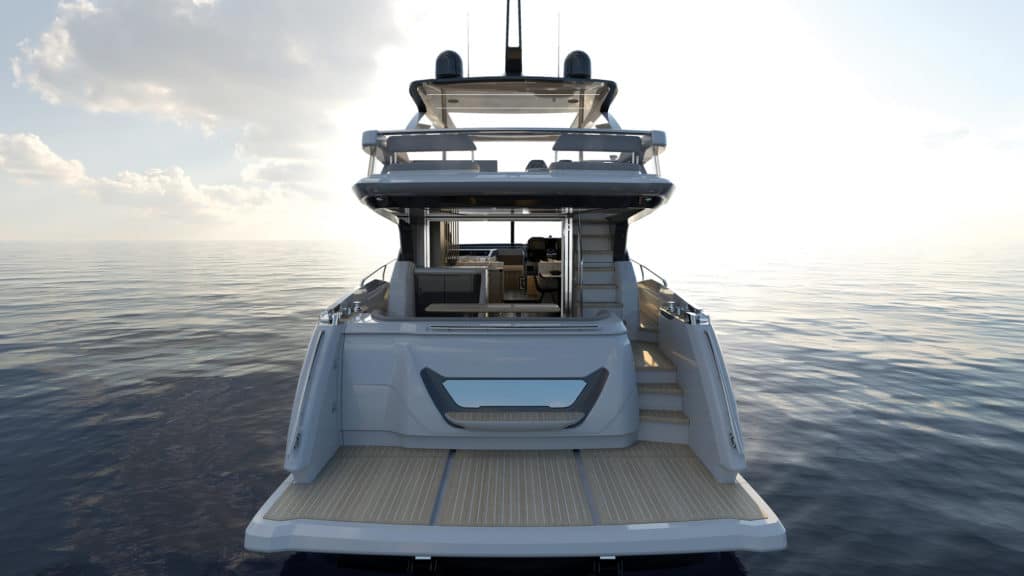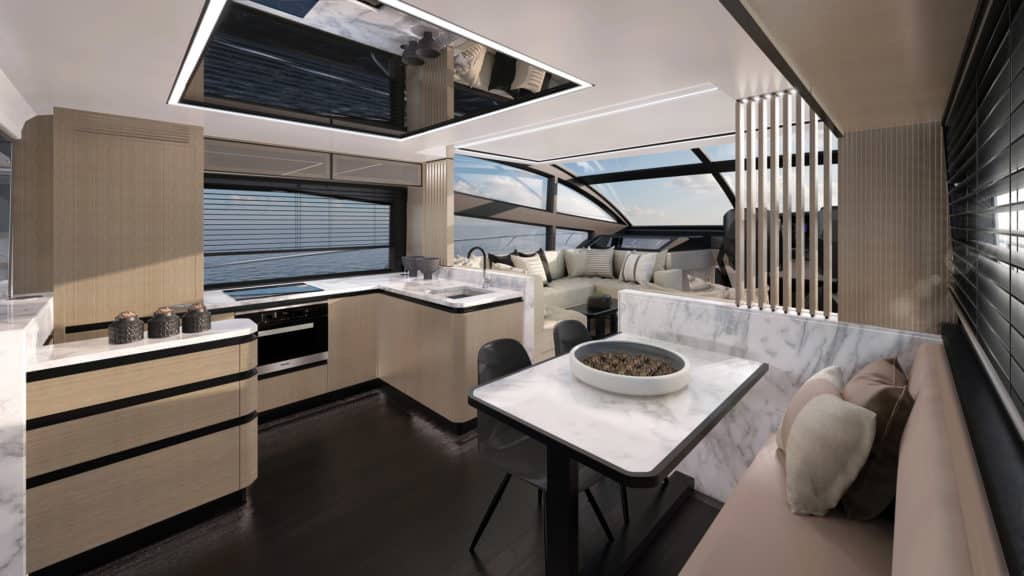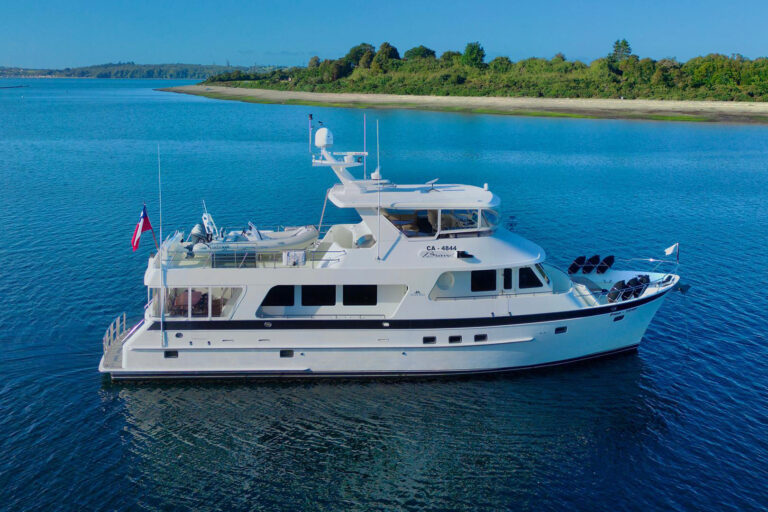
I stared at the Pearl 62′s image above, switching back and forth between placing my thumb over the flybridge and then removing it. The exercise, to my eye, displays lines that appear inspired by an express cruiser—but with the added function of a flybridge. That flybridge does not distract from her sporty look and instead flows with the yacht’s superstructure.
Bill Dixon, who also penned the builder’s 80- and 95-footers, did the exterior design and naval architecture on the Pearl 62. Dixon drew motion into the yacht’s profile via the raked window forward, the curved glass reaching aft in the superstructure and the fiberglass line between the panes flanking the salon. That line rises up and aft, similar to the look of a wake breaking behind the transom. The flybridge hardtop’s supports lean forward, contrasting the sweptback look and adding sleekness to the yacht’s appearance. Hullside glass extends the profile visually, while adding light and views in the four-stateroom, three-head layout belowdecks.

There is a full-beam master stateroom amidships with an en suite head, two chairs and a table to starboard, and a private entrance from the salon. This stateroom’s volume is possible because the yacht’s Volvo Penta IPS diesels are farther aft than straight-shaft powerplants, increasing living space. There is a forepeak VIP with an en suite head. Abaft to port and starboard are guest staterooms with double berths.
The flybridge has a helm console to starboard with a sun pad to port. There is U-shaped seating abaft the sun pad, and two L-shaped seats are far aft.
Power options are IPS950s (725 hp), IPS1050s (800 hp) and IPS1200s (900 hp). Preliminary sea trials showed a reported top hop of 32 knots.

The Pearl Yachts 62 might be the builder’s smallest model, but it has all the function and flair of her bigger siblings.
Take the next step: pearlyachts.com









